Instruction
How to fix your slice with path and face angle
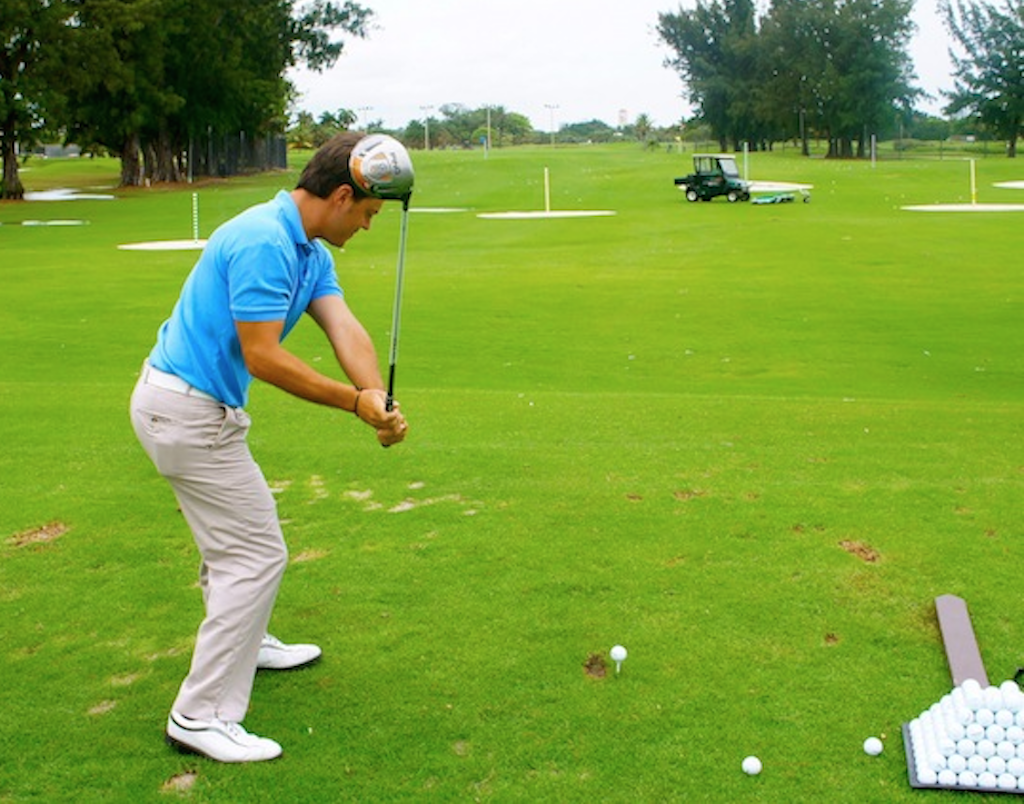
“How do I fix a slice?”
That question gets asked of me more than any other, and it’s what most of my lessons revolve around. Actually, for some golfers, curing a slice is even more important than scoring lower.
Not every slicer is created equal, which makes my job on the lesson tee exciting. Below, I show the flaws of a typical slicer, and offer a plan of how to fix it depending on numerous variables.
Note: All explanation is based on a right-handed golf swing.
The Typical Slicer
There are two things I have to do in order to successfully fix a slice:
- Shift the path farther right than it is currently so the player can hit a push draw or a pull draw, depending on their skill-level.
- Shift the face farther left of the path than it is currently so the ball will move left after it leaves the club face.
You can see that the golfer pictured above has a path (the blue line) that moves well left of the intended target (-11.9 degrees) and a face angle (the red arrow) that points right of the target (1.4 degrees).
As most GolfWRX readers know, the ball mostly begins in the direction of the face angle at impact and curves away from the path with a centered hit. So in the example above, the face is right of the path by 13.4 degrees. That will cause the ball to curve to the right with a 16.7 degree spin axis. Couple this with the face angle at impact pointing right of the target by 1.4 degrees, and you get a ball that starts right and goes farther right — the familiar banana-slice.
Here’s my challenge as a teacher. Fixing a slice depends on this player’s skill-level, practice time, coordination, goals, etc. The best option for long-term ball striking success would be for the player to shift the path more to the right, but what if the player cannot physically manage this change? Or what if they don’t have the practice time necessary to do so?
In this case, I would work with the golfer to shift the path as much as possible, but focus on shifting the face angle more leftward so the golfer can hit pull draws. “At least the ball didn’t go right,” they will say. Over time, we can start working on a more in-to-out path, but I have to work slowly so a golfer can still maintain a certain level of playability.
OK, now that we’ve identified that the path is too leftward, how do we go about fixing it?
The FIX
- This player’s shoulders are positioned too far left at address, causing the club to track leftward on the downswing.
- We must square this player’s body to the feet, hips and shoulders, and also align her a touch to the right so the path shifts more rightward.
- With the alignments more square to one another and the body aimed a touch right, you can see that the path is still left (-3.9 degrees), but it’s much better than the -11.9-degree leftward path we saw earlier.
- If this is the best the golfer can do from here, I might work on moving the face a touch more leftward. That will create pull draws, which aren’t the best option, but at least the ball is going left and the golfer didn’t have to rebuild their swing in the process.
- If the golfer has the ability to shift the path rightward, then we move on to altering the sequence of the pivot so the club transitions more under rather than over. If not, we help shift the face left of the path, hit pulls, and learn to play with them.
Let’s say that through altering alignments of this player and restructuring the pivot on the way down that we now have the right shoulder moving “back and down” into its delivery position, thus the path is now 5.9 degrees from in-to-out as shown above. The last issue is to shift the face just left of the path.
Currently, the path is indeed from in-to-out, but the club face at impact is still right of the path by 1.6 degrees, causing this ball to hang right.
We know that the starting direction of the ball is controlled by the face angle at impact, and a push draw is hit with a path that is to the right and a face that is left of the path, but right of the target. With the average player, at first all you want to do is make sure they shift the face angle leftward at impact, EVEN if it’s too much. We can always adjust that later with driver’s settings, a grip change, changes in vertical swing plane, ball position, etc. The bottom line is that we must have the face left of the path at impact for the ball to move left. In the photo above, we just adjusted the driver’s settings to promote more of a draw and the face retuned to a position consistently left of the path.
As stated earlier, I’m not too upset that this player hit a pull. The face was left of the target at impact (-2.3 degrees), and because she is a high-handicap player she only wanted to see the ball move left in the air.
Teachers have many directions they can go during a lesson, but I try my best to choose the one that best fits the goals and practice time a player has based on my experience on the lesson tee. With some players, I choose a simpler lesson plan, but with others I might choose a more long-term plan for total eradication of the flaw. It all depends, but fixing the puzzle of a slicer is how I spend most days on the lesson tee.
Remember: To fix a slice, shift the path to the right and the face to the left!
- LIKE58
- LEGIT5
- WOW3
- LOL3
- IDHT1
- FLOP1
- OB2
- SHANK13
Instruction
Clement: Laid-off or perfect fade? Across-the-line or perfect draw?

Some call the image on the left laid off, but if you are hitting a fade, this could be a perfect backswing for it! Same for across the line for a draw! Stop racking your brain with perceived mistakes and simply match backswing to shot shape!
- LIKE0
- LEGIT0
- WOW0
- LOL0
- IDHT0
- FLOP0
- OB0
- SHANK1
Instruction
The Wedge Guy: The easiest-to-learn golf basic

My golf learning began with this simple fact – if you don’t have a fundamentally sound hold on the golf club, it is practically impossible for your body to execute a fundamentally sound golf swing. I’m still a big believer that the golf swing is much easier to execute if you begin with the proper hold on the club.
As you might imagine, I come into contact with hundreds of golfers of all skill levels. And it is very rare to see a good player with a bad hold on the golf club. There are some exceptions, for sure, but they are very few and very far between, and they typically have beat so many balls with their poor grip that they’ve found a way to work around it.
The reality of biophysics is that the body moves only in certain ways – and the particulars of the way you hold the golf club can totally prevent a sound swing motion that allows the club to release properly through the impact zone. The wonderful thing is that anyone can learn how to put a fundamentally sound hold on the golf club, and you can practice it anywhere your hands are not otherwise engaged, like watching TV or just sitting and relaxing.
Whether you prefer an overlap, interlock or full-finger (not baseball!) grip on the club, the same fundamentals apply. Here are the major grip faults I see most often, in the order of the frequency:
Mis-aligned hands
By this I mean that the palms of the two hands are not parallel to each other. Too many golfers have a weak left hand and strong right, or vice versa. The easiest way to learn how to hold the club with your palms aligned properly is to grip a plain wooden ruler or yardstick. It forces the hands to align properly and shows you how that feels. If you grip and re-grip a yardstick several times, then grip a club, you’ll see that the learning curve is almost immediate.
The position of the grip in the upper/left hand
I also observe many golfers who have the butt of the grip too far into the heel pad of the upper hand (the left hand for right-handed players). It’s amazing how much easier it is to release the club through the ball if even 1/4-1/2″ of the butt is beyond the left heel pad. Try this yourself to see what I mean. Swing the club freely with just your left hand and notice the difference in its release from when you hold it at the end of the grip, versus gripping down even a half inch.
To help you really understand how this works, go to the range and hit shots with your five-iron gripped down a full inch to make the club the same length as your seven-iron. You will probably see an amazing shot shape difference, and likely not see as much distance loss as you would expect.
Too much lower (right) hand on the club
It seems like almost all golfers of 8-10 handicap or higher have the club too far into the palm of the lower hand, because that feels “good” if you are trying to control the path of the clubhead to the ball. But the golf swing is not an effort to hit at the ball – it is a swing of the club. The proper hold on the club has the grip underneath the pad at the base of the fingers. This will likely feel “weak” to you — like you cannot control the club like that. EXACTLY. You should not be trying to control the club with your lower/master hand.
Gripping too tightly
Nearly all golfers hold the club too tightly, which tenses up the forearms and prevents a proper release of the club through impact. In order for the club to move back and through properly, you must feel that the club is controlled by the last three fingers of the upper hand, and the middle two fingers of the lower hand. If you engage your thumbs and forefingers in “holding” the club, the result will almost always be a grip that is too tight. Try this for yourself. Hold the club in your upper hand only, and squeeze firmly with just the last three fingers, with the forefinger and thumb off the club entirely. You have good control, but your forearms are not tense. Then begin to squeeze down with your thumb and forefinger and observe the tensing of the entire forearm. This is the way we are made, so the key to preventing tenseness in the arms is to hold the club very lightly with the “pinchers” — the thumbs and forefingers.
So, those are what I believe are the four fundamentals of a good grip. Anyone can learn them in their home or office very quickly. There is no easier way to improve your ball striking consistency and add distance than giving more attention to the way you hold the golf club.
More from the Wedge Guy
- The Wedge Guy: Golf mastery begins with your wedge game
- The Wedge Guy: Why golf is 20 times harder than brain surgery
- The Wedge Guy: Musings on the golf ball rollback
- LIKE88
- LEGIT15
- WOW6
- LOL1
- IDHT0
- FLOP4
- OB1
- SHANK8
Instruction
Clement: Stop ripping off your swing with this drill!

Not the dreaded headcover under the armpit drill! As if your body is defective and can’t function by itself! Have you seen how incredible the human machine is with all the incredible feats of agility all kinds of athletes are accomplishing? You think your body is so defective (the good Lord is laughing his head off at you) that it needs a headcover tucked under the armpit so you can swing like T-Rex?
- LIKE0
- LEGIT3
- WOW2
- LOL0
- IDHT0
- FLOP0
- OB0
- SHANK2
-

 19th Hole3 weeks ago
19th Hole3 weeks agoJustin Thomas on the equipment choice of Scottie Scheffler that he thinks is ‘weird’
-

 19th Hole3 weeks ago
19th Hole3 weeks ago‘Absolutely crazy’ – Major champ lays into Patrick Cantlay over his decision on final hole of RBC Heritage
-

 19th Hole2 weeks ago
19th Hole2 weeks agoLET pro gives detailed financial breakdown of first week on tour…and the net result may shock you
-

 19th Hole3 days ago
19th Hole3 days agoReport: LIV star turns down PGA Championship invite due to ‘personal commitments’
-

 19th Hole1 week ago
19th Hole1 week agoGary Player claims this is what ‘completely ruined’ Tiger Woods’ career
-

 Whats in the Bag2 weeks ago
Whats in the Bag2 weeks agoTeam McIlowry (Rory McIlroy, Shane Lowry) winning WITBs: 2024 Zurich Classic
-

 19th Hole3 weeks ago
19th Hole3 weeks agoTaylorMade signs 15-year-old AJGA Rolex Junior Player of the Year to an NIL contract
-

 Equipment1 week ago
Equipment1 week agoGolf fans left surprised by LIV’s choice of course for its 2024 individual championship event

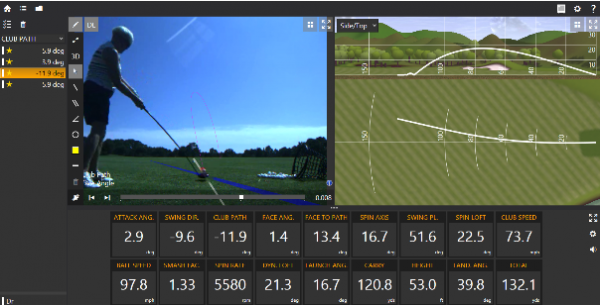
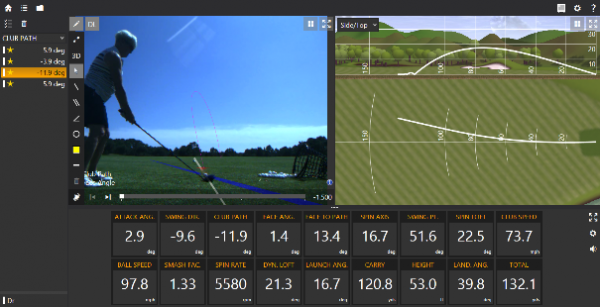
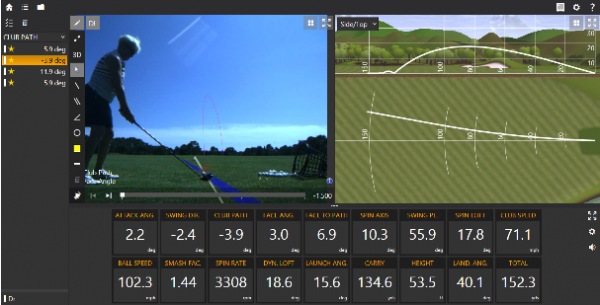
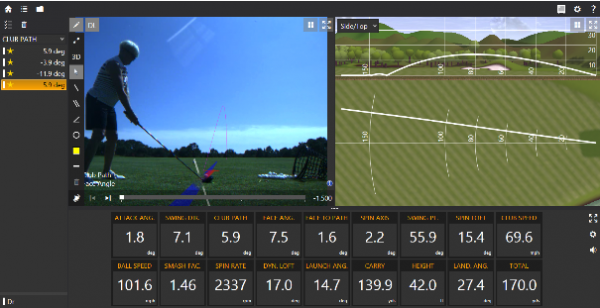
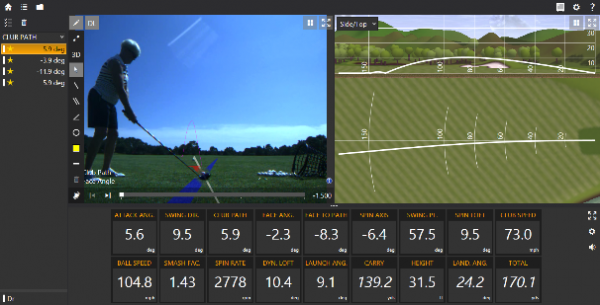


















Tom Stickney
Jun 3, 2015 at 12:08 am
Thx for the positive comments; I try hard to make you all happy! ????
MattSihv
Jun 4, 2015 at 12:32 am
Tom, thanks for this easy-to-understand article! My “fade” gets worse when I rush my tempo. I have trouble getting closed and it costs me at least 5-6 shots per round (especially with my longer clubs). Any drills you could recommend?
Philip
Jun 2, 2015 at 8:39 pm
I went from a banana slice, then slice, then slice/fade, then duck hook, then straight pull, then high hook, to high draw and now high fade. Even starting to try knock-down shots. A lot of tiny adjustments in my grip pressure, set-up, stance, swing triggers, mentally not trying to kill the ball and making a relaxed backswing (huge improvement with this one), playing one shot at a time, realizing it is not a do-or-die situation, and a final grip setup tweak to get to having more smiles than even after making a swing. I finally feel like I can play golf instead of walking in a field whacking a ball randomly all over the place.
Funny thing is that I must of tried each little tweak 3-6 times over the last three years – trying them and then moving on because the improvement was only for a round or two. Eventually, all of the tweaks must of kept moving me towards a better swing because now each new (old) tweak feels like another gear clicking into place.
Thanks for your articles – they have helped me many times get over hurdles and try things from a different perspective.
Dennis Clark
Jun 2, 2015 at 6:58 pm
Spot on Tom. When a student tells me they “tend to fade it”, they are asking for help with their slice!
Andy
Jun 1, 2015 at 10:40 pm
Hey Sam before you bash someone with great material, remember he is posting this information at no cost to us. If you want a personalized lesson from Mr. Stickney pay him for it, his current rate is $200 an hour.
Sam
Jun 1, 2015 at 6:59 pm
I’m rating this article a shank because of a simple line 6 sentences in. I’m a left handed player and nothing irks me more than having to slug through an article because I’m trying to mentally flip everything.
patrick
Jun 1, 2015 at 7:36 pm
I’m a lefty and I’ll rank your comment a shank because Tom was astute enough to qualify the article noting that the article was based on a right handed golfer. Get over yourself sir, most golfers are right handed and I’m good with that.
And if you didn’t already know all golf courses are designed for right handed golfers too. Don’t you think its more of an advantage for lefties? Your welcome.
Brian
Jun 1, 2015 at 7:53 pm
You’re the best. Good work.